Die & Mould : Where the Manufacturing Begins!
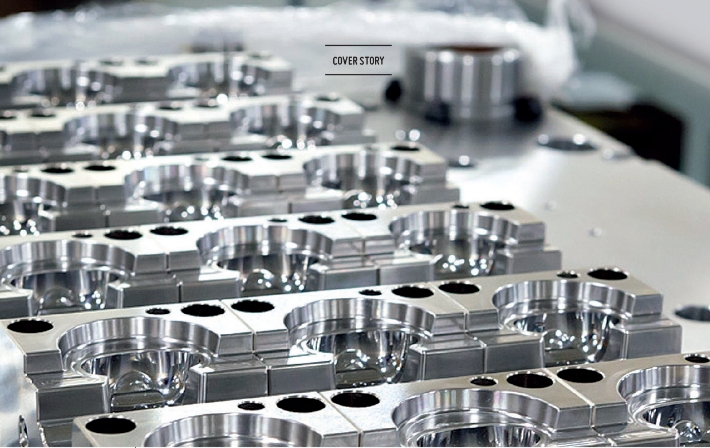
The die and mould industry in India has evolved over the years and is currently enjoying a significant position in the global manufacturing landscape. An insight into the industry that is keeping pace with the time and redefining quality and precision...
he die and mould industry of the country has undergone an awe-inspiring transformation. Capable of catering to a variety
of specific demands from a number of booming sectors including Automotive, Plastic, Electronics and Electrical, Healthcare, and Machine Tools, the industry finds itself brimming with opportunities.
“The market is positive and the tooling industry will grow from the current market size of ` 15,000 crore to ` 20,000 crore by 2020 with 9-10 percent growth with about 13 percent CAGR,” reveals DK Sharma, President, Tool and Gauge Manufacturers Association of India (TAGMA India).
Industry players sense the upbeat Die & Mould scene
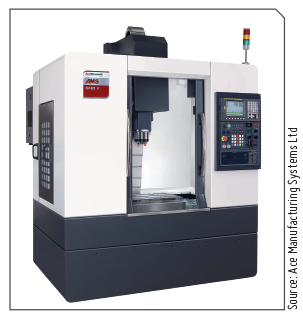
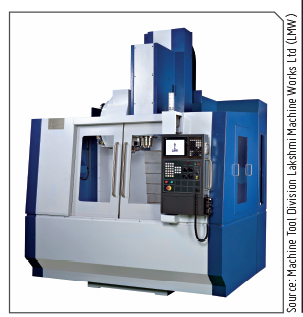
D Shanmugasundaram, MD, S&T Engineers Pvt Ltd is highly optimistic about the market: “Undeniably, there is a strong and sustainable growth ahead in the Indian die and mould market in the coming years.” According to him, the die and mould market is directly related to the automotive industry. “The passenger vehicle sales in India was 3.2 million in the year 2017. The country’s passenger vehicle market is expected to expand by 10 percent and it is set to overtake Germany this year. In such case, in 2018, the Indian passenger car market will overtake the German market in terms of volume for the first time. The demand for die and mould will increase to support the growing automotive sector in both the passenger car and two-wheeler segments,” he adds.
“With lot many activities in government sectors, more plastics will be consumed. Also in line with ‘Make in India’, many OEMs have started manufacturing in India. This will be a driving factor for the die and mould industry,” says Shanmugasundaram.
Vivek Nanivadekar, Executive Director, Fibro India Precision Products Pvt Ltd shares the same opinion with regards to the potential the market holds. “The automobile is the largest customer of the die and mould, followed by the white goods. These both sectors have promising future. The premier car makers are still importing dies but are slowly contemplating to localize some tools. This will give the boost to the die and mould industry,”he opines.
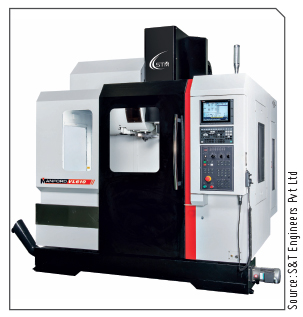
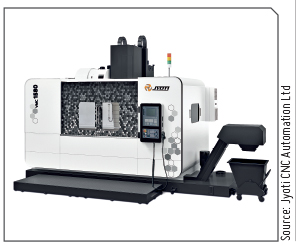
“India is now a global manufacturing hub which has attracted world-wide manufacturers to start up their manufacturing facilities here. The domestic automobile market is still the most promising for die and mould and tool room business,” notes Vikas Taneja, Vice President – Marketing, Jyoti CNC Automation Ltd.
According to Dr Vishwas R Puttige, Head – Business Development, Ace Manufacturing Systems Ltd, “The automotive industry continues to look promising in the year ahead. The electronics sector is fast emerging in India with many new manufacturers setting up bases here. The manufacturers in the general engineering sector are also investing heavily in capacity. Hence, the moulds required for each of these industries are likely to see increased requirements in the years ahead.”
“Aerospace and Composites sectors are doing quite well. Toolmaking organizations have an implicit understanding of micro precision, which makes them most suitable to diversify into these sunrise markets in the country,” believes Vineet Seth, Managing Director – South Asia & Middle East, Mastercam India Pvt Ltd.
Pro-market Government
policies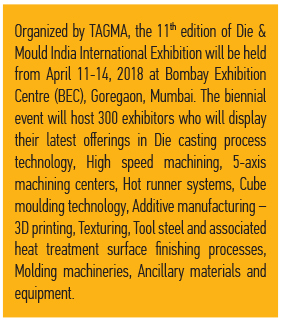
There are clear trends that the economy is moving in the right direction. “The present Central Government has made significant progress on important economic reforms to improve the ease of doing business. Almost all industries are booming. Still phenomenal growth being in the automobile, aerospace and consumables is expected to move faster. Infrastructure developments including railways and new energy plants have boosted the demand for metal cutting,” states Shanmugasundaram.
Nanivadekar points out to the paucity of commercial tool rooms in the country and applauds the Government’s measures that come as a relief to the MSMEs. “Around 50 percent supply comes from the small and medium tool makers. The small toolmaker is not in a position to expand in a big way due to the lack of finance. But now with the new MSME policy, the government has committed to provide the finance at a reasonable cost to the MSME sector.” He adds, “Due to ‘Make in India’ drive by the central government, OEMs are going for localization. This is crucial if they have to be competitive in the Indian market. Once they are competitive in the Indian market, they can be competitive all over the world.”
Open to change
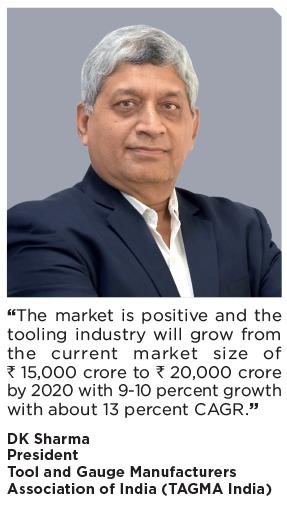
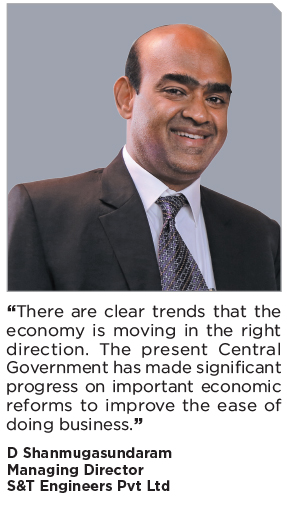
The fortune of any industry is predicted from how accommodating it is to the changing trends and the challenges that follow. The die and mould makers of the country are optimistic about the demand for their products in 2018 as are the solution providers to them. The players are geared up to adapt to the newer and advanced concepts and technologies in tool and mould making that can further enhance the quality as well as productivity, flexibility and efficiency while shortening the lead times. “We seek more information on the latest trends in advanced CNC programming for dies and moulds, ultra-high speed spindles, software upgradations, R&D on high accuracy mould making and mould maintenance techniques as well as new applications of data gathering, increased automation, cloud computing and Internet of Things (IoT) that forms the crux of Industry 4.0,” says Indraneel Bhattacharya, Senior General Manager Marketing & Sales, Machine Tool Division, Lakshmi Machine Works Ltd (LMW).

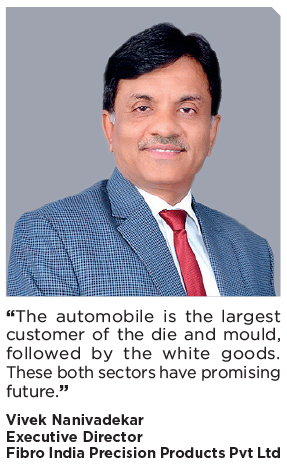
“In the materials front, lighter materials and more complex alloys and their machining will impact the die and mould industry. New software upgrades that pave way for several automated tasks, different control features for eliminating input errors, and faster spindle speeds would pay major dividend in the die and mould sector,” believes Bhattacharya.
According to Puttige, with the advancements in technology, new processes are being adapted for product development in tool room & die and mould industry. “Some of the interesting emerging trends are advanced materials, superior surface finishes using nano-machining, moulds with conformal cooling, etc.,” he notes.
A major focus of the CAD/CAM industry, currently, is on bridging the gap between subtractive and additive manufacturing. Another area of growing interest is the use of Industrial Robots for applications like milling, tape-laying and laser cutting. Companies like Mastercam have already created an ecosystem around the product to help independent players to build innovative products on the programming interface offered by Mastercam. “We are also working with partners in the areas of Industry 4.0 to enable Industrial Internet of Things (IIoT) in their planning and manufacturing processes,” says Seth.
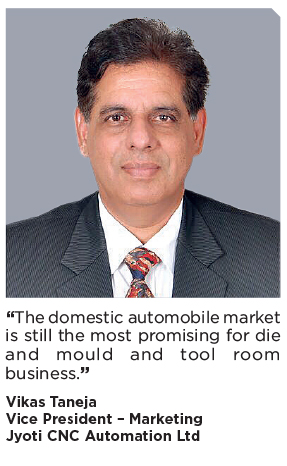

Beng Chieh Quah, Head - Marketing, Asia Pacific, FARO Technologies, stresses on the need for quality in the products, “There is an increasing demand for greater accuracy in die and mould products. There is much potential for the Indian die and mould market, especially with India expected to become the fifth largest manufacturing country in the world by the end of year 2020.”
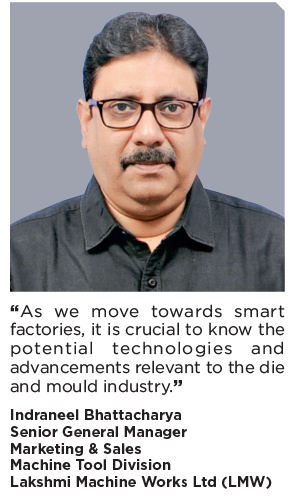

Market offerings
With the future of the die and mould market looking up, the players providing solutions to the industry are all geared up to cater to its specific requirements. Below are the state-of-the-art offerings that claim to take the sector a notch higher.
S&T’s EX 40/EX 400 5-axis control CNC Wirecut EDM machine and VL 610 high speed vertical machining center are best suited for die-mould applications.
JV 80 VMC from LMW: It is an advanced vertical machining center with a die and mould application that offers high spindle speeds of 15,000 rpm with increased rapids on all axes, which greatly reduces cycle time.
540V from AMS: BT-40 model with rear chip disposal is suitable for machining smaller sized die components at a lower cycle time. It employs a high rigid casting bed for stable machining.
VMC 1580 from Jyoti: This machine finds its application where heavy material removal and direct machining are required from castings
and forgings.
Efforts underway
In order to address the present challenges in the Indian tooling industry and to develop it to become globally competitive, there is an acute need to have an ecosystem like its global counterparts. TAGMA is paying heed to this, and with the grant of Department of Heavy Industry, Government of India, is setting up a TAGMA Centre of Excellence and Training in Chakan, Pune. “There are many technical institutions to impart training in tooling. The young generation must avail of them to understand the opportunities in it and get motivated to enter the industry, which is considered the mother industry of manufacturing,” suggests Sharma.
AUTHOR
Poonam Pednekar
Chief Copy Editor
Magic Wand Media Inc
poonam.pednekar@magicwandmedia.in
HIGHLIGHT 1:A major focus of the CAD/CAM industry, currently, IS ON bridging the gap between subtractive and additive manufacturing. Another area of growing interest is the use of Industrial Robots for applications like milling, tape-laying and laser cutting.
Highlight 2:The Die & Mould India International Exhibition, organized by TAGMA, is around the corner which is to display India’s mettle in the sector.
Highlight 3:In order to address the present challenges in the Indian tooling industry and to develop it to become globally competitive, there is an acute need of an ecosystem like its global counterparts.
Source: Mastercam (CNC Software Inc., USA)




 Facebook
Facebook.png) Twitter
Twitter Linkedin
Linkedin Subscribe
Subscribe